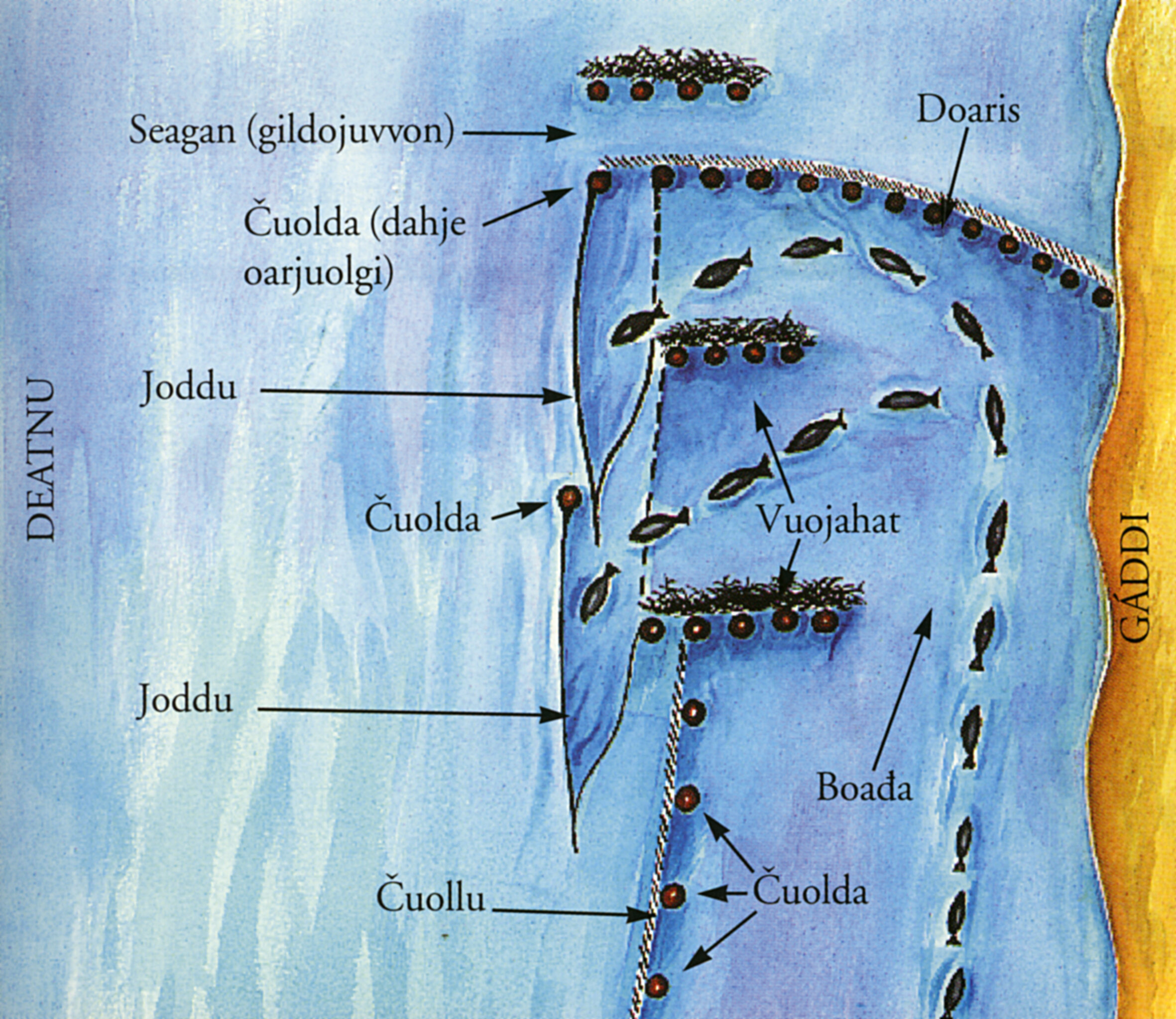The Sami salmon fishing language
By Aage Solbakk
The construction of the stem seal fish with some of the Sami technical terms. Illustration: Mihkku Solbakk / ČálliidLágádus.
Imagine that the Sami words describing buođđun - the fishing of the Tana river system - could be as old as 5,000 years!
This includes the words buođđu - fence, doaris - cross fence, joddu - bag yarn, fierbmi - yarn and oazis - cross fence.
The word fierbmi (vierbmi) is a genuine Sami word and a common Sami term for yarn.
In ancient times, the Sami made their nets entirely themselves. The word gođđit, which means to tie fishing nets (also known as weaving), is an ancient Sami word.
The oldest raw material for making yarn was probably nettle fiber (nettle: a plant called gáskálas in Sami). Nettle fiber - gáskálas - has been used as a textile material in many parts of Europe and Asia. Throughout history, indigenous peoples in Siberia have made yarn from nettle thread.
In 1914, a number of tools were found in a bog near Andrea, a few miles northeast of Viborg in Russia, dating from the Old Stone Age, around 4,500 years before our era. Remains of a yarn made of solid double thread were found. In addition, they found a stone sack - gikta - and a small piece of wood - luovdi - to attach to the edge of a fishing net to hold it up in the water. The discovery was made in an area that is an old Sami settlement area. The net is believed to have belonged to the Sami.
There is also another special Sami word for nets. It is juoŋas, which is a net set out under the ice. The verb in Sami is juoŋastit, which means to fish with a net under the ice.
In more recent times, the Sami have traded or bought hemp - ruoivát (fl.) - from traveling traders to make yarn.
Neslet wire
Yarn threads found in a marsh near the town of Viborg in Russia in 1914. Pälsi, 1920.


